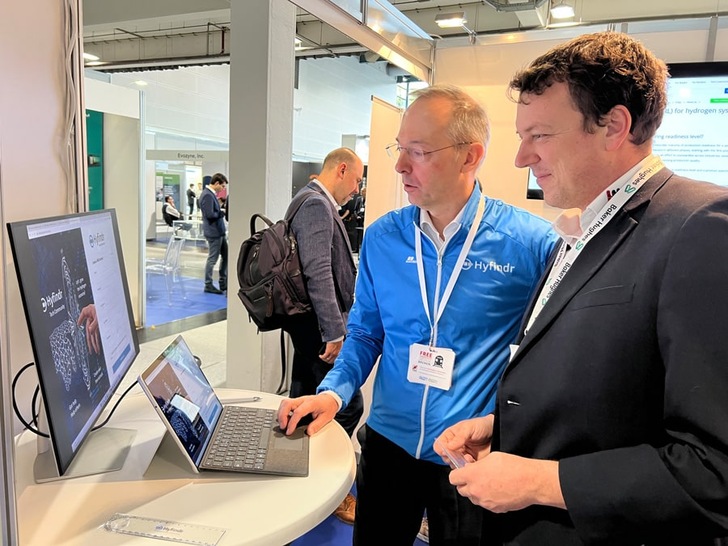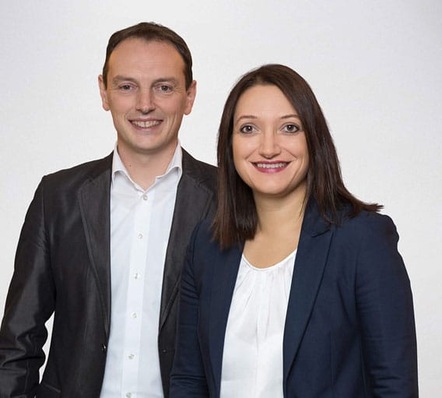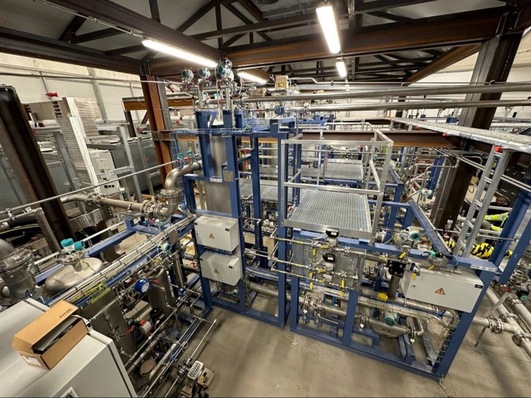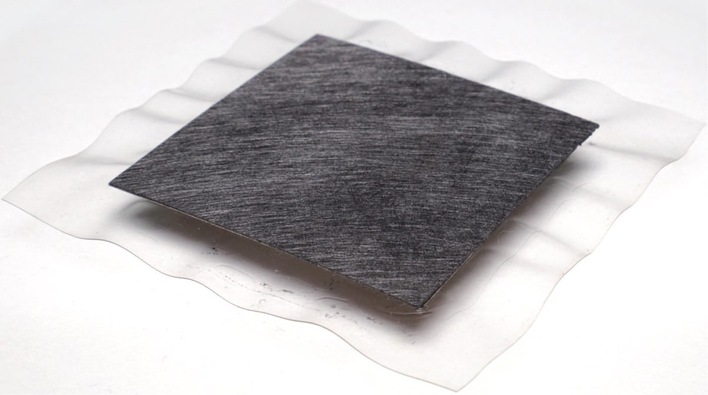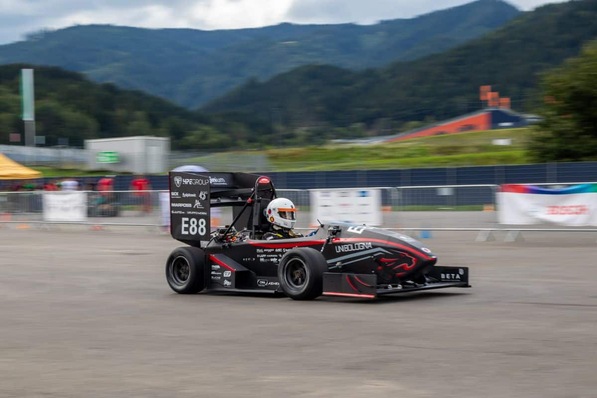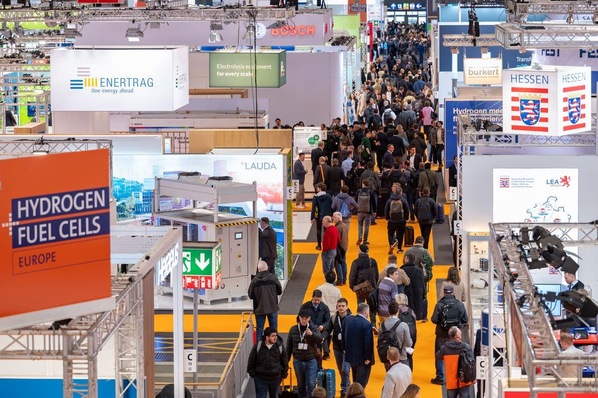In the research project H2-Quartiere, the consultancy Steinbeis-Innovationszentrum Energieplus (here abbreviated SIZ E+) is investigating until 2024 how decentralized hydrogen production near to consumers through electrolysis (ELY) can be implemented. On behalf of the German ministry for economy and climate protection, six model districts equipped with ELY systems in urban and suburban areas of Baden-Württemberg will be analyzed and checked to see if there are technical-economic hurdles. The results will be presented in a market analysis for electrolyzers.
This study is based on 23 interviews with operators and manufacturers, with the analysis of the manufacturer market limited to companies that have a branch in Germany. For manufacturers without a branch in Germany, the rapid availability of service personnel in case of repairs or maintenance would be called into question. The results of this market analysis provide an insight into the current situation with regard to investment costs (CapEx), efficiencies and stack temperatures as well as challenges for operators in the distribution of green hydrogen.
Consideration of the operator side
In Germany, there are currently 13 publicly known electrolysis plants with a power consumption of more than 1 MW in operation (status in 2022, see Fig. 1). Together, these plants have an ELY capacity of around 70 MW. Out of seven interviewed operators of large ELY plants, two complained about the lack of standardization in the stack market. When replacing a stack, it would be advantageous to not be reliant on the same manufacturer that produced the first, it was said. One operator also expressed concern regarding non-European producers when it comes to rapid availability of service technicians in the event of a malfunction.
With regard to the politically envisaged scale-up, five out of seven operators noted that there are not enough customers or demand for green hydrogen to make further investments worthwhile. This is also demonstrated in the ways that green hydrogen has been utilized up to now. So far, six out of 13 large-scale electrolysis plants have fed their hydrogen into the natural gas grid. Only six supply hydrogen to the industrial and one exclusively to the mobility sector. For the benefit of the national economy and the environment, green hydrogen should be used primarily in industrial processes that are otherwise difficult to decarbonize .
The experience of one plant operator was marked by various challenges. The construction process was delayed in particular due to delivery problems and poor performance by individual construction companies. The putting into operation and the approval process were made disproportionately difficult by additional safety requirements imposed by the responsible regional council. The operation after completion was burdened by sharply rising, volatile electricity prices. Despite these difficulties, the operator is planning to erect another, even larger, ELY plant. The company believes that the long-term ecological and economic potential of green hydrogen will prevail over the medium-term disadvantages.
Consideration of the manufacturer side
The investment costs (CapEx) of hydrogen-producing electrolyzers, regardless of process type, is about 1,000 €/kWel for a large plant. Comparison, however, is sometimes difficult, as not all producers offer the same scope with regard to supportive and auxiliary equipment (balance of power, BoP). The players surveyed are planning expansion with increasingly automated production lines, which could significantly reduce CapEx. For PEM electrolyzers, the share of BoP in the cost lay at 55 percent in 2020 . Since then, the market volume has increased. However, it can be assumed that here too considerable cost reductions will follow effective scaling.
Figure 2 shows the energy conversion efficiency (LHV to AC = lower H2 heating value to alternating current) of the total of 17 electrolyzers from nine different manufacturers, anonymized and sorted according to electrolysis process. These are alkaline electrolyzers (AEL) in addition to proton-exchange membrane (PEM) and anion-exchange membrane (AEM) electrolyzers. Only makes from manufacturers who are based in Germany and already have customer references are considered. Solid oxide electrolyzers (SOEL), because of the heat demanded by the process to achieve the high operating temperature, are not considered here.
Shown for each electrolysis process are the minimum, mean and maximum values from the manufacturer’s data. Regardless of process type, they vary little between the examined products, with AEL showing slightly higher values. However, the comparability of the manufacturers’ data is a question. Currently, there are no norms or policies to define a standard that indicates under which comparable conditions the efficiency should be determined.
It is striking that some manufacturers state the same system efficiency for makes of different sizes. This indicates that the power consumption of the BoP is only roughly accounted for. In the case of some data, it is unclear whether the specification of the efficiency is a snapshot of the “beginning of life” or an average over the whole lifetime. Furthermore, there is often no information about the load condition at which the efficiency was measured.
Through waste heat recovery, a significant increase in total system efficiency can be achieved. An important factor here is the temperature level of the waste heat source. Figure 3 shows the specifications of nine manufacturers with regard to the stack temperature during operation under nominal load. The stack temperature is the temperature of the cooling medium midway between the inlet and outlet from the stack.
The stack cooling is usually divided into two circuits via a heat exchanger: a primary circuit for direct stack cooling and a secondary glycol circuit for heat dissipation to the environment, for example via package crossflow cooling towers.
Regardless of process type, the difference between the stack entry and exit temperature is usually not significantly more than 10 Kelvin, as higher spans can lead to higher degradation and inhomogeneous load conditions in the stack . The primary cooling circuit, because of the special demands on the cooling medium imposed by direct contact with the cells, is usually separated from the glycol circuit via a heat exchanger. For proper hydraulic separation, another heat exchanger may be required in the secondary glycol circuit for waste heat extraction. If a temperature difference of, for example, 10 K is the target, then the return flow temperature from the waste heat utilizer must be between 15 and 20 K below the stack temperatures in Figure 3.
In light of this, all current products, in combination with a peak demand power station via a local heating network, are suitable for supplying an existing or new building area with heating energy. The temperature of most AELs, at an average of 76 °C, is theoretically high enough to enable the supply of hot tap water where appropriate. In practice, however, there are hurdles that can make the use of waste heat difficult. In containerized systems, compact heat exchangers with small transfer surfaces and high temperature differentials are often used, which requires extremely low entry temperatures on the part of the cooling medium. When using a heat pump, this entry temperature is decisive for the evaporating temperature of the refrigerant. To ensure a high efficiency, or rather coefficient of performance, of the heat pump, larger heat exchangers and higher entry temperatures are advantageous.
Climate-neutral neighborhood
The principle of waste heat utilization for heat supply had already been implemented by SIZ E+ in the climate-neutral city quarter (Klimaquartier) established in Esslingen am Neckar in the state of Baden-Württemberg (see H2-international May 2021). The project is based on the idea of a climate-neutral quarter with the lowest possible carbon footprint. The heart of the energy supply is an AEL plant with an ELY capacity of 1 MW, which receives surplus electricity from local photovoltaic systems as well as from other regions. The ELY waste heat at the same time serves as an energy source for a heat pump. The project follows the innovative approach of power-to-gas-and-heat, in which hydrogen is to be produced close to the consumer on a local level at sensible nodes.
In the new project H2-Quartiere, the potential implementation of this approach in six other model neighborhoods is being explored. Through the use of waste heat in the conversion process and through the short transport routes to the end users, this system approach is potentially extremely efficient and offers highly synergistic effects to the much needed clean heating and energy transition. According to the 2021 study by the German real estate association ZIA, around 20 percent of the heating demand in the buildings sector could be covered by ELY in year 2045 if half of the German hydrogen demand is produced by local ELY plants within Germany .
Tiktak, W. J. (2019), “Heat Management of PEM Electrolysis,” TU Delft Master Thesis, p. 19, http://resolver.tudelft.nl/uuid:c046820a-72bc-4f05-b72d-e60a3ecb8c89
Flis, G. et al. (2021), “12 Insights on Hydrogen,” Agora Energiewende, p. 16, https://static.agora-energiewende.de/fileadmin/Projekte/2021/2021_11_H2_Insights/A-EW_245_H2_Insights_WEB.pdf
Fisch, M. N., Lennerts, K. et. al (2021), “Verantwortung übernehmen. Der Gebäudebereich auf dem Weg zur Klimaneutralität,” ZIA Zentraler Immobilien Ausschuss, pp. 144-145, https://zia-deutschland.de/wp-content/uploads/2021/12/Verantwortung-uebernehmen-Gutachten.pdf
IRENA (2020), “Green Hydrogen Cost Reduction: Scaling up Electrolysers to Meet the 1.5⁰C Climate Goal,” International Renewable Energy Agency, Abu Dhabi, p. 52, https://www.irena.org/-/media/Files/IRENA/Agency/Publication/2020/Dec/IRENA_Green_hydrogen_cost_2020.pdf?rev=4ce868aa69b54674a789f990e85a3f00
Authors:
Prof. Dr. M. Norbert Fisch
Dr. Christian Kley
Benjamin Trippe benjamin.trippe@siz-energieplus.de
Simon Marx
All from Steinbeis-Innovationszentrum Energieplus, Braunschweig
Image: Current commercially operated electrolysis plants in Germany


